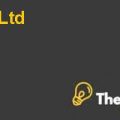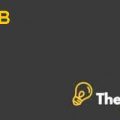
Service Corporation International, the largest funeral consolidator in the world, has just made a formal takeover offer of Loewen, its main competitors. Supply by about 50% higher than the price at which the shares are traded Loewen Group 30 days ago. If Loewen Group to fight the seizure, or should he accept it? This case helps students understand how to evaluate the company's strategy with respect to its external environment and internal capabilities.
Introduction: (For Calculations, Please refer to appendices)
Loewen Group was an organization involved in the business of death care and funeral management. The group was formed by Loewen family, who were concerned about expanding this business. The Death Care business success depended upon managing good relationships with the customers because they looked for those companies which had a reputation for providing good quality services. In addition to that, the company also realized advance bookings from the customers on a pre-need basis. However, the payment in advance from the customers for these pre-need bases represented a number of accounting issues, as the recognition policy for transactions could cause it to manipulate the results easily so as to obtain the desired results.
With the passage of time, as the industry realized a potential gain in acquiring companies in order to reap the benefits of economies of scale, there were a number of acquisitions made by the Loewen group in to take advantage of it.
Recently, the organization started to face difficulties due to high level of debt it took for these acquisitions and also it realized a decline in business due to reduction in death rates.
- Loewen Group had grown during the first half of 1990s through the following strategies:
- It acquired huge number of funeral homes and cemeteries, in order to realize benefits from economies of scale through utilizing resources including human assets in all the areas in order to reduce the overheads; for example, one receptionist and other permanent staff was used in managing several funeral homes and cemeteries. Similarly, with increased expansion, it was able to reduce redundant assets; for instance, it used the same hearses and embalming in different funeral homes in order to reduce the need for any additional stock. In addition to that, there were also other benefits such as those which allowed the company to gain favorable terms on loans and higher discount rate from the banks and suppliers respectively.
By acquiring these funeral homes, it was able to provide them with capital improvement and merchandising purchasing in order to enable those areas to increase performance, where lack of investment was deterring them from exploiting any opportunities for growth; additionally, it also provided them with its professional management and financial services.
However, in order to encourage the previous owners to continue working in the organization, Loewen took a different approach and only acquired a majority stake in those acquisitions in order to give a minority stake to the previous owners and also allowed them to continue working as managers because they were more experienced and concerned with this type of business than others. As described above, this type of business gave paramount importance to the management of relationship with the customers, due to which it was important to keep those who were already in the industry.
Overall, these were the tactics, through which the company was able to grow explosively during the first half of 1990s.
- These were many benefits relating to the use of debt as a financing instrument due to the following reasons:
- Interest payments on debt were tax deductible due to which they were often categorized as a cheap source of finance.
- Issue cost of debt was cheaper as compared to equity issuance.
- It also avoided the dilution of ownership and earnings as there was no involvement of lender in the business.
- Issue of debt produced positive signal to the market with regards to its financial ability to meet interest payments on time.
- Issue of debt was also a quick process and assisted the organization in executing its strategies such as those relating to acquisition and different investments.
However, there were certain drawbacks of this source of finance as its over-usage could lead to financial distress. It also imposed restriction on the organizational activities and in the worst condition it can also lead to liquidation.
- With the passage of time, the company started to face various problems, due to which its performance started to decline in 1999.
- As the company was on the verge of acquiring different funeral homes and cemeteries in order to reap the benefit of acquisition and as a result of it, it started to take out debt to finance this activity. However, with increase in debt level, it started to face financial distress because at the end of the year, it had accumulated a debt of 2.3 billion, which was due within a year; however, as the cash on hand was 30 million and thus it was insufficient for the payment. That’s why the non-payment of debt could lead the company to liquidation.
- The most obvious reason for the decline of the company was due to fall in death rates and the number of accounts receivables that were declared to default on their balances owed to it.
- In addition to this, the company was unable to control its size, which was increasing at a higher rate due to acquisitions, as a result of which it was unable to manage the integration of newly acquired assets.
- The problems with the cemetery business also contributed to this decline.
- The company was also found to be liable for an amount of 500 million relating to its purchase of funeral homes because a verdict was filed against it for reneging on its agreement.
- There were other contingent liabilities as well and also it had broken a number of covenants imposed by the terms of financial institutions, to which it owed the debt.
As a result of these issues, the company stock price had fallen to $ 8.44 from its rate of $ 25.75 at the start of 1998 and in addition to it, its credit ratings were also downgraded as well.
The problem faced by the company could be known as the hardship faced by the management. As it’s a fact that, it was facing less demand for its business with the passage of time due to the decline in death rates and increase in debt level, which was causing financial distress to the organization..........
by Mary M. Crossan, Ariff Kachra Source: Richard Ivey School of Business Foundation 28 pages. Publication Date: Feb 05, 1998. Prod. # 98M008-PDF-ENG
This is just a sample partial case solution. Please place the order on the website to order your own originally done case solution.
The solution will also come with a separate excel file with calculations.












